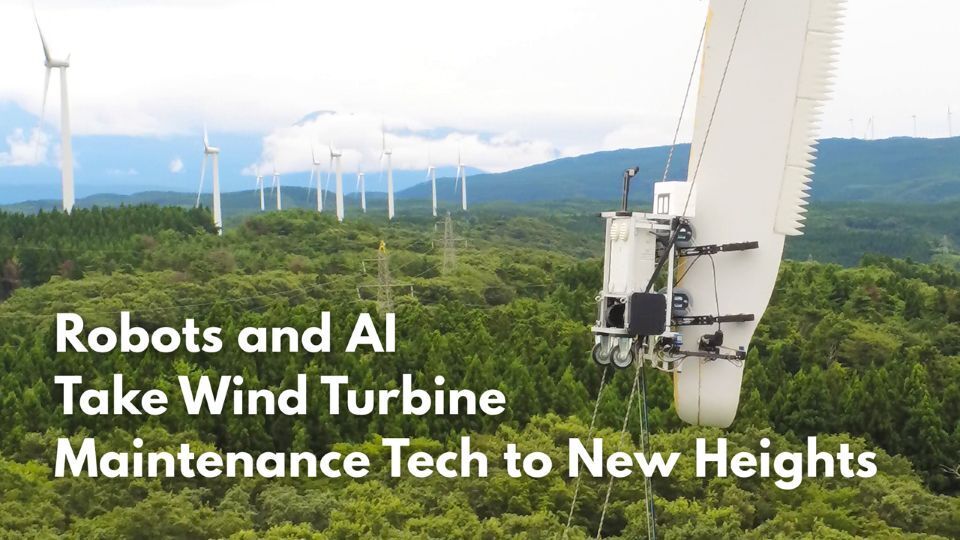The agricultural sector today faces major challenges. Population growth is driving higher demand for food even as natural disasters damage crops and fields, and the agricultural workforce declines. To overcome these challenges and make agriculture a sustainable source of food for all, one Japanese manufacturer of agricultural machinery is deploying robotics and data to create the “farming of the future.”

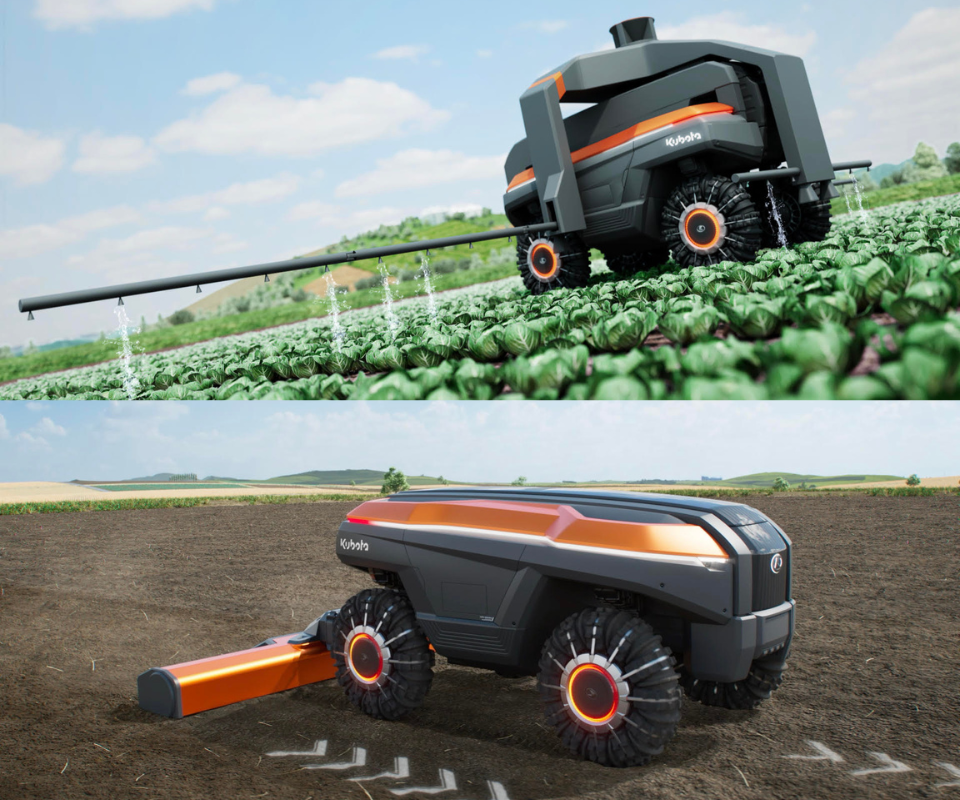
Kubota Corporation is working to solve the biggest problems facing agriculture today and make sustainable farming a reality. ©KUBOTA Corporation
As the world’s population continues to grow, demand for food is rising. To meet this need, it will be essential for the agricultural sector to not only secure personnel but also improve productivity through labor-saving innovations that deliver the same or better output even as fewer workers do less work. Other increasingly salient issues include destabilized production due to extreme weather events accompanying climate change, and the environmental impact of fertilizers and other agrochemicals. If these challenges are not met, the sustainability of agriculture itself could be at risk.
Japanese agricultural machinery manufacturer Kubota Corporation has been actively working to address this crisis since the 2010s, developing a range of products and solutions for automating farm equipment, improving efficiency through data-driven measures, visualizing crop growth, and more. Kubota’s ultimate goal is to make agricultural machinery completely automated and uncrewed, reducing workforce and labor requirements while still boosting productivity.
At the outset of this R&D program, Kubota envisaged three distinct steps toward the full automation of agricultural equipment. It has already progressed through Step 1, “Automated steering with a farmer onboard,” and achieved Step 2, “Automated, uncrewed operation under farmer supervision.” In 2017, the company introduced an autonomous tractor that can perform agricultural work with no one onboard. Rice transplanters and combine harvesters soon followed, creating a lineup of autonomous farm machinery that Kubota named its “Agri Robo Series.” By 2024, around 700 machines from this series had shipped and were in use on farms across Japan.
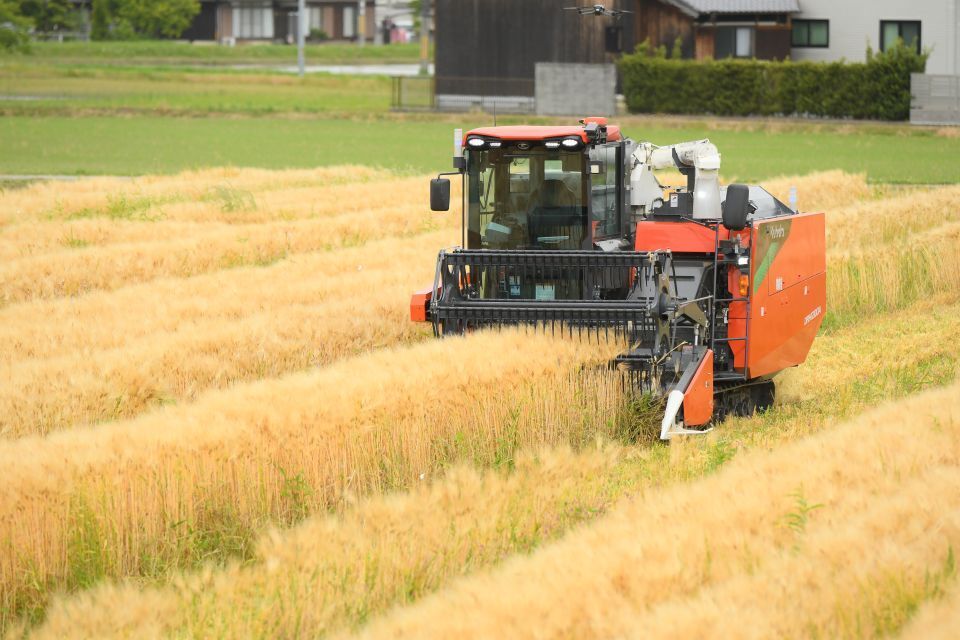
The DRH1200A-A Agri Robo Combine Harvester uses GPS for autonomous drive. It can also perform high-precision harvesting with error margins of just a few centimeters.
Since then, Kubota has developed two major advances toward Step 3, “Completely automated operation”: the “Type: V” and “Type: S” versatile platform robots, currently on display in the Future City pavilion at Expo 2025 Osaka, Kansai, Japan.
The Type: V is a completely autonomous robot that can efficiently do everything from tilling to harvesting on large tracts of level farmland. One unique feature of the Type: V is its ability to adjust the height and width of its body according to crop row spacing and current growth conditions. Attaching the necessary implements allows the Type: V to perform a wide range of agricultural work, including tasks that currently require separate machines like tractors and combine harvesters.
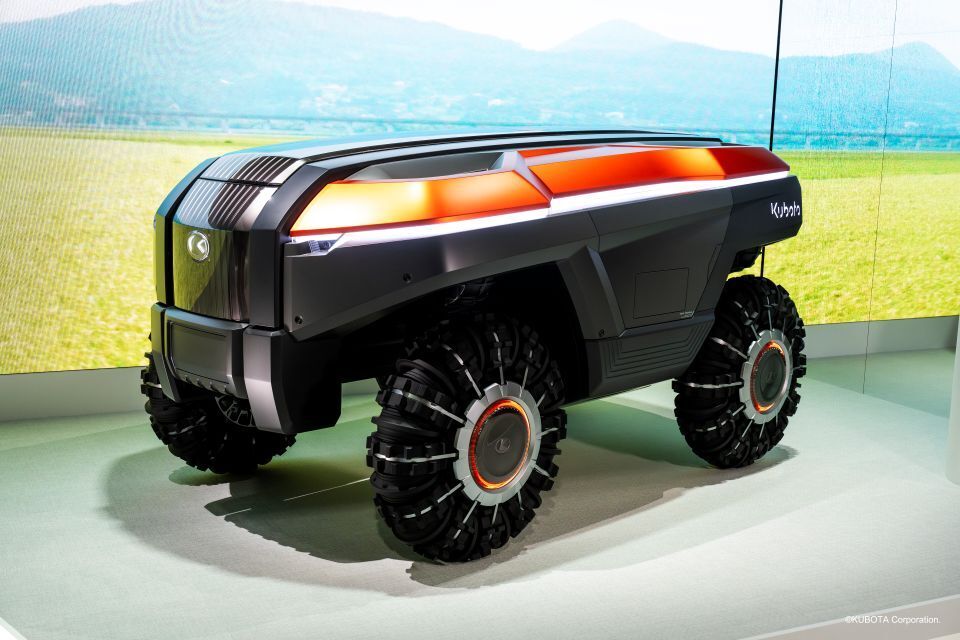
The Type: V robot was first unveiled in the Future City pavilion at Expo 2025 Osaka, Kansai, Japan.
Meanwhile, the Type: S robot can hydraulically extend and retract its four wheeled legs to control its center of gravity and remain horizontal even on hilly and rugged terrain, such as in orchards. This makes it useful for transporting cargo, trimming weeds on the ridges between rice paddies, collecting and transporting rice straw, and other management tasks requiring a high degree of precision.
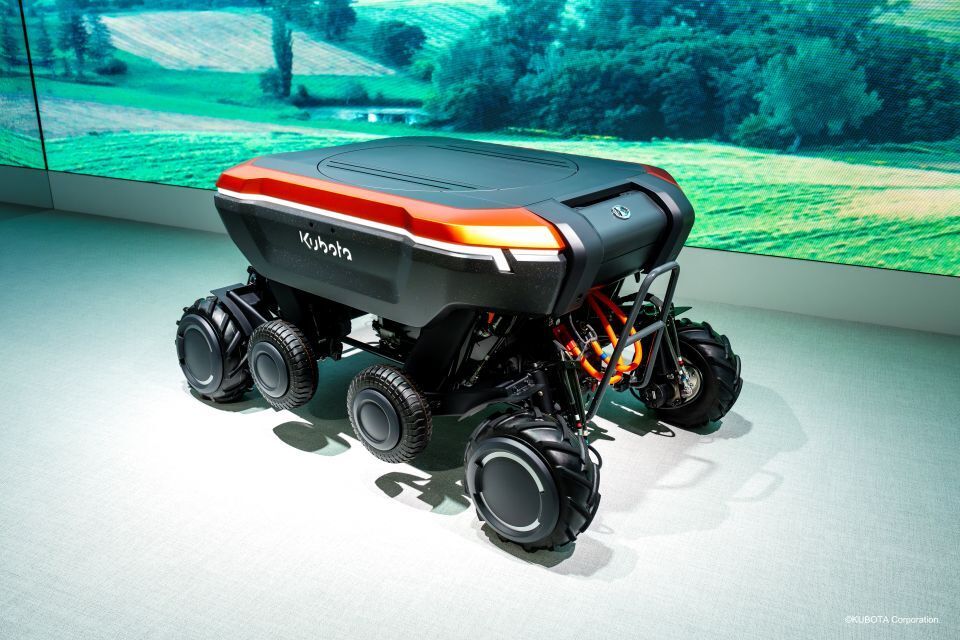
The Type: S robot. The KATR, a product based on this chassis, was shown at the global tech fair CES® 2025 and won a Best of Innovation Prize in the Industrial Equipment & Machinery category at the CES Innovation Awards® 2025.
IWAMI Ken’ichi, general manager of Technology Innovation R&D Dept. II at Kubota, spoke to us about the “farming of the future” that Step 3 will make possible.
“Our objective with Step 3 is to enable agricultural machinery to think for itself and perform tasks optimally. Equipment with built-in AI will receive orders from users remotely and then think and make work decisions at the same level as a farmer with considerable expertise and experience. Eventually, multiple robots will coordinate among themselves and pursue work goals in harmony.”
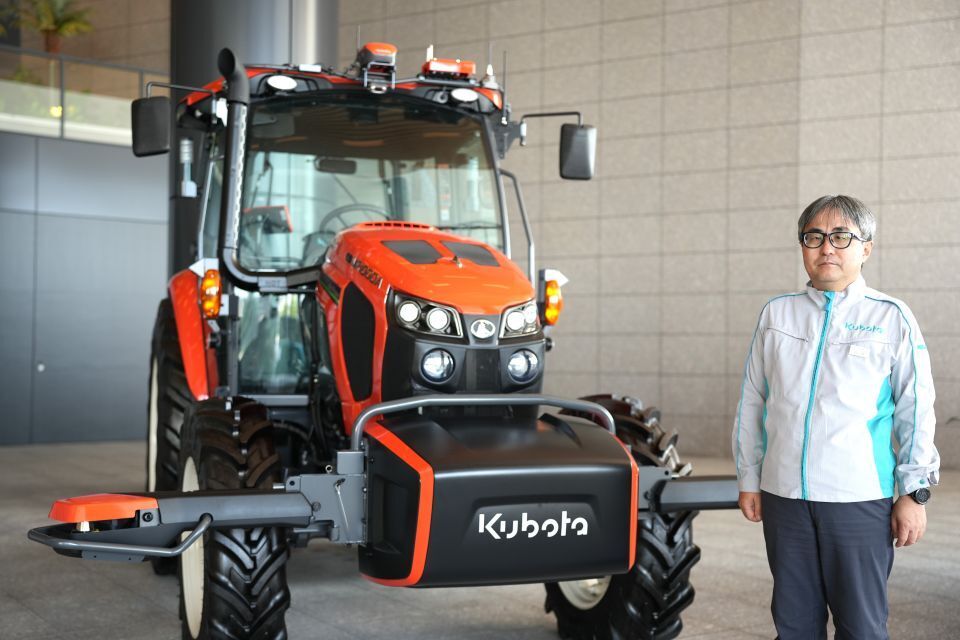
IWAMI Ken’ichi, General Manager, Technology Innovation R&D Dept. II, Kubota Corporation
To achieve this degree of uncrewed operation, AI capable of thinking like a human will be needed, which is why Kubota formed a strategic partnership with US semiconductor manufacturer Nvidia Corporation in 2020. Kubota is also working with NTT Group and The University of Tokyo. An R&D program that includes collaboration with other parties is now clearing hurdles one by one as it pursues Step 3 of Kubota’s automation roadmap.
“We believe that fully autonomous agriculture will improve crop yield and quality and make agriculture sustainable without any burden on people or the environment,” says Iwami. Step by step, humanity draws closer to the day when robotics and AI can resolve the challenges agriculture faces and ensure stable production of high-quality food on farms around the world.





























